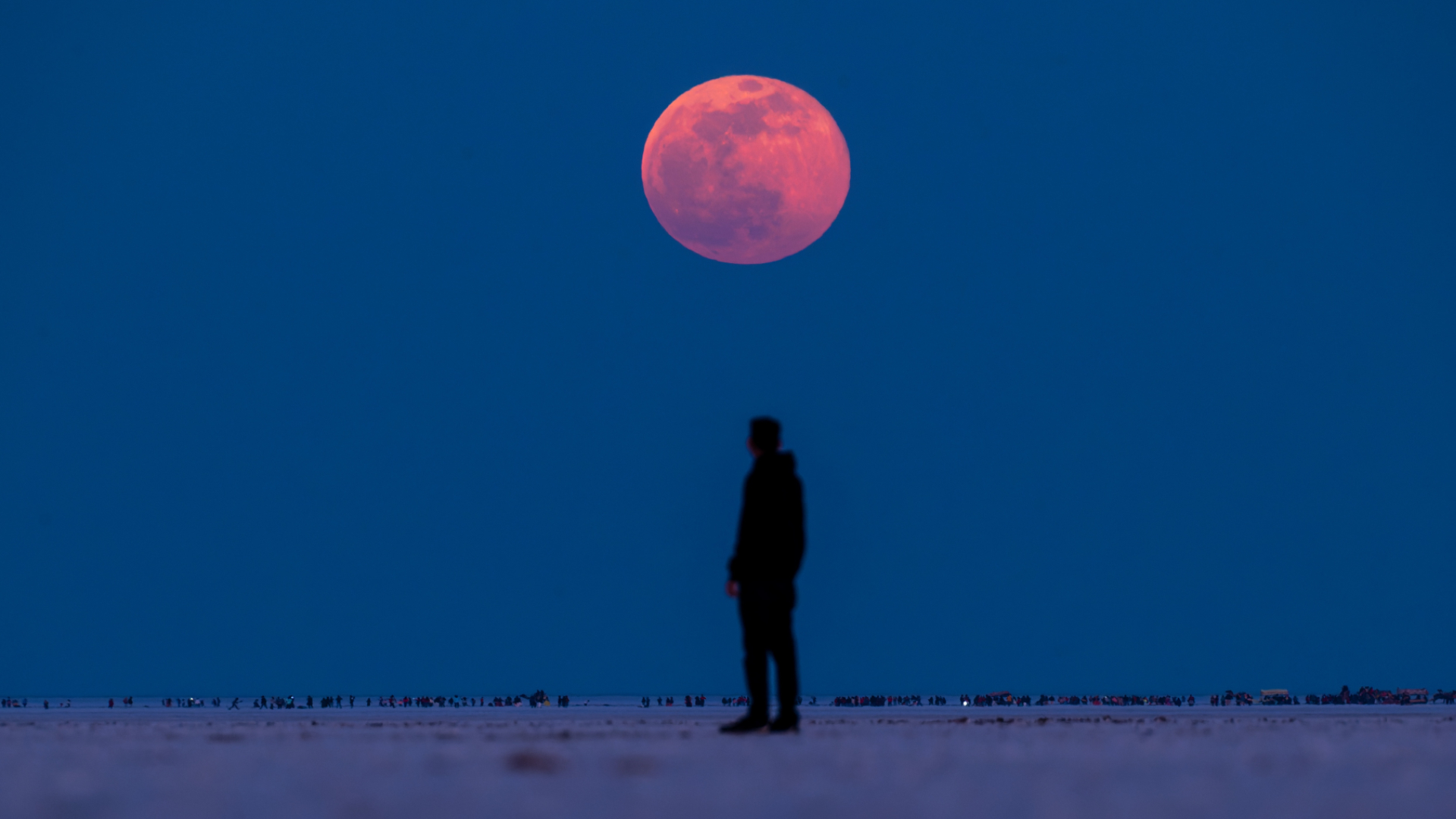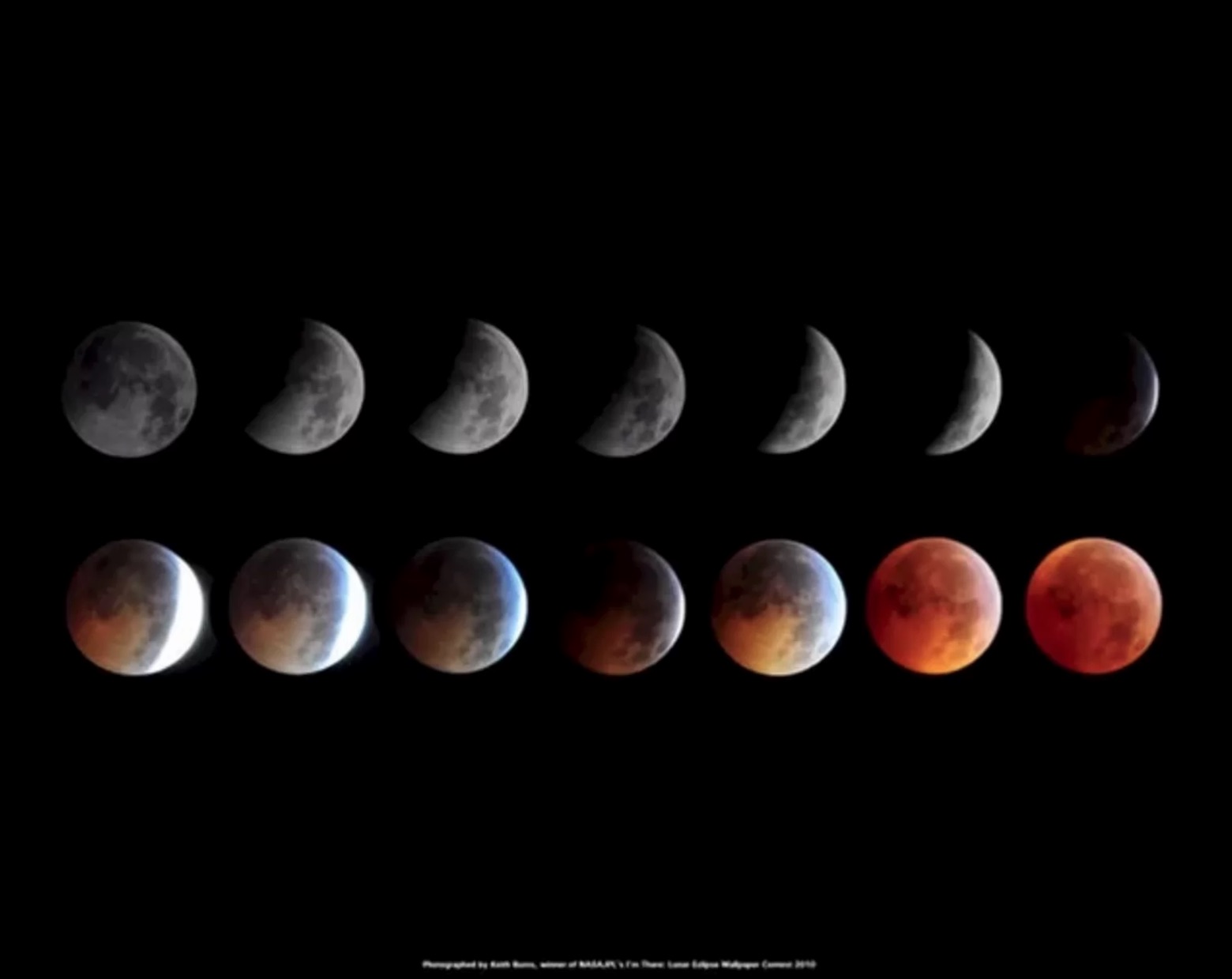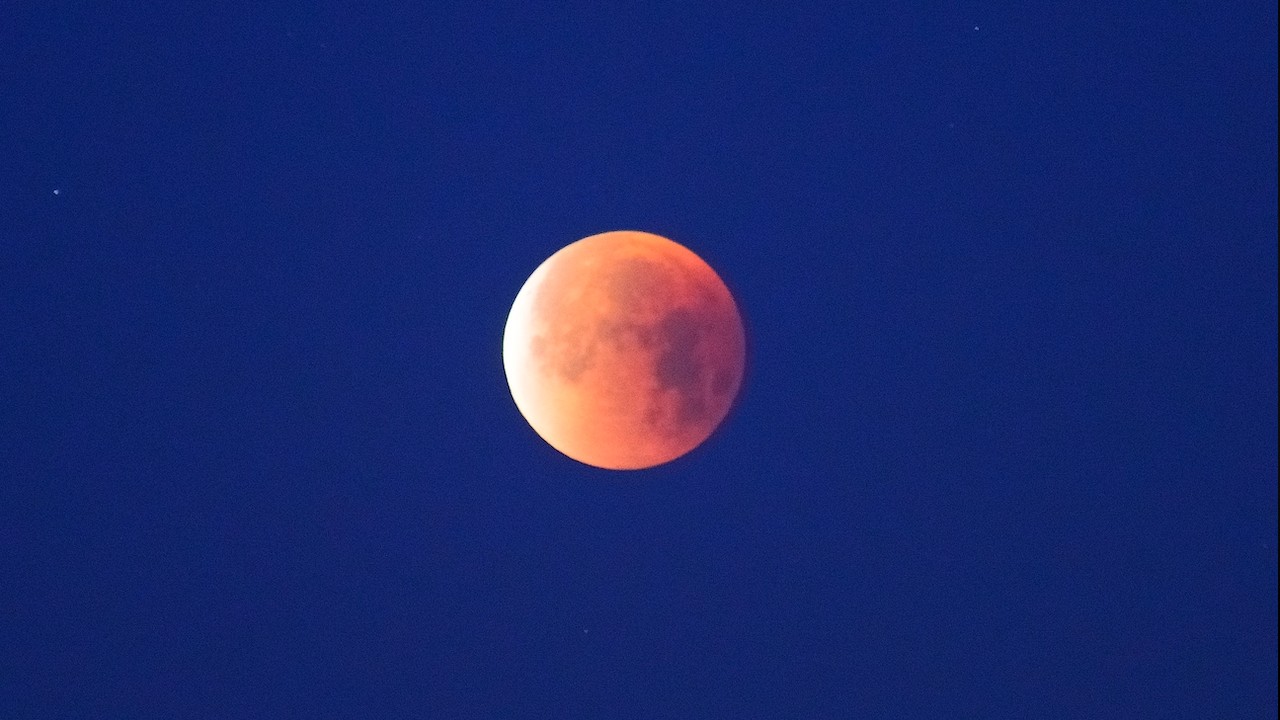What is a blood moon?
It may look spooky, but a blood moon is just a trick of the light.

When is the next blood moon?
The next blood moon will occur on Sept. 7, 2025. It will be visible from start to finish across Asia and Western Australia. Glimpses of some phases will also be possible from Europe, Africa, eastern Australia and New Zealand. This event will not be observable from the Americas
You can catch up with the latest lunar eclipse news and events with our lunar eclipse live blog.
What is it?
A "blood moon" happens when Earth's moon is in a total lunar eclipse. While it has no special astronomical significance, the view in the sky is striking as the usually whitish moon becomes red or ruddy brown.
Lunar eclipses can only happen during a full moon, when the sun fully illuminates the surface. Usually, a full moon has no eclipse because the moon orbits in a slightly different plane than the Earth and the sun. However, at times the planes coincide. Earth passes in between the moon and the sun and cuts off the sunlight, causing an eclipse.
Related: Lunar eclipses 2025: When, where & how to see them
If Earth partially blocks the sun, and the darkest part of its shadow falls across the moon's surface, it is called a partial eclipse. You will see a black shadow taking a bite out of the moon. Sometimes, the moon passes through the lighter part of Earth's shadow, causing a penumbral eclipse. Only seasoned skywatchers will be able to tell the difference because the moon only darkens very slightly.
During a full eclipse, however, something spectacular happens. The moon is fully in Earth's shadow. At the same time, a little bit of light from Earth's sunrises and sunsets (on the disk of the planet) falls on the surface of the moon. Because the light waves are stretched out, they look red. When this red light strikes the moon's surface, it also appears red.

How red the moon appears can depend on how much pollution, cloud cover or debris there is in the atmosphere. For example, if an eclipse takes place shortly after a volcanic eruption, the particles in the atmosphere will make the moon look darker than usual.
While there are planets and moons all over the solar system, only Earth is lucky enough to experience lunar eclipses because its shadow is just large enough to cover the moon completely. The moon is slowly drifting away from our planet (at roughly 1.6 inches or 4 centimeters a year) and this situation won't persist forever. There are roughly two to four lunar eclipses every year, according to NASA, and each one is visible over about half the Earth.
How a blood moon saved Christopher Columbus
Some ancient cultures didn't understand why the moon turned red, causing fear. At least one explorer — Christopher Columbus — used this to his advantage in 1504.
According to a Space.com Skywatching columnist Joe Rao, Columbus and his crew were stranded on an island now known as Jamaica. At first the Arawak people who lived there were welcoming, but over time, Columbus' crew grew restless and murdered or robbed some of the indigenous people. Understandably, the indigenous people weren't eager to help the crew search for food, and Columbus realized famine was drawing near.

Columbus had an almanac with him foretelling when the next lunar eclipse would take place. Armed with this information, he told the Arawak that the Christian god was unhappy that Columbus and his crew received no food. God would turn the moon red as a symbol of his anger, Columbus said. As the event took place, frightened people "with great howling and lamentation came running from every direction to the ships laden with provisions, praying to the Admiral to intercede with his god on their behalf," according to an account by Columbus' son Ferdinand.
Additional resources
If you have a budding astronomer at home who wants to learn more about eclipses check out Solar and Lunar Eclipses (Explore Outer Space) by Ruth Owen or take a look at NASA's Space Place webpage on the different types of moons.
Bibliography
K. G. Strassmeier et al "High-resolution spectroscopy and spectropolarimetry of the total lunar eclipse January 2019," Astronomy & Astrophysics, Volume 653, March 2020, https://doi.org/10.1051/0004-6361/201936091
Natural History Museum, "Lunar eclipse guide: what they are, when to see them and where," May 27, 2021.
Royal Museums Greenwich, "How to see a lunar eclipse," January, 2022.
Jessica Marshallsay, "Blood moon rising: How lunar eclipses might help us find life on other planets," The University of Queensland, January, 2022.
Join our Space Forums to keep talking space on the latest missions, night sky and more! And if you have a news tip, correction or comment, let us know at: community@space.com.
Get the Space.com Newsletter
Breaking space news, the latest updates on rocket launches, skywatching events and more!

Scott is a staff writer for How It Works magazine and has previously written for other science and knowledge outlets, including BBC Wildlife magazine, World of Animals magazine, Space.com and All About History magazine. Scott has a masters in science and environmental journalism and a bachelor's degree in conservation biology degree from the University of Lincoln in the U.K. During his academic and professional career, Scott has participated in several animal conservation projects, including English bird surveys, wolf monitoring in Germany and leopard tracking in South Africa.
You must confirm your public display name before commenting
Please logout and then login again, you will then be prompted to enter your display name.










